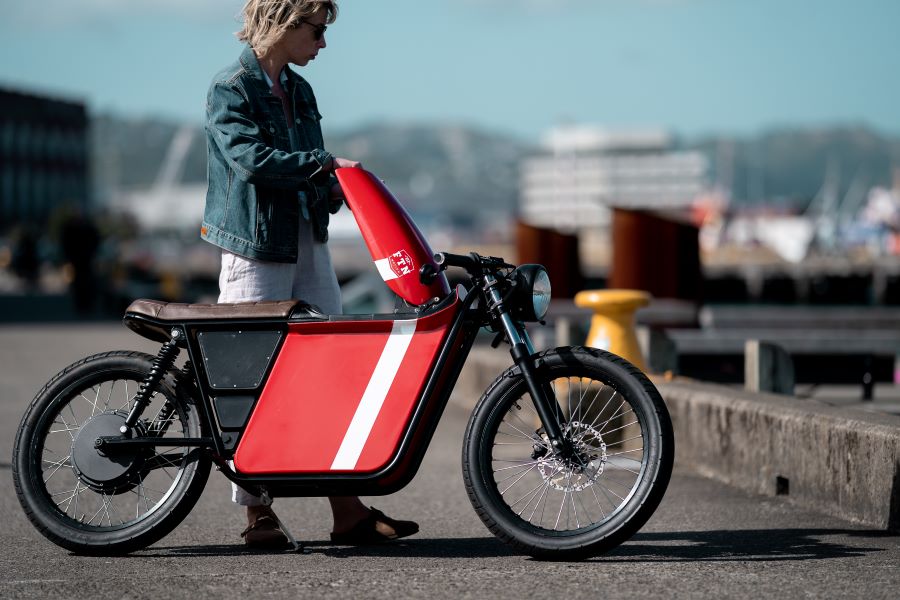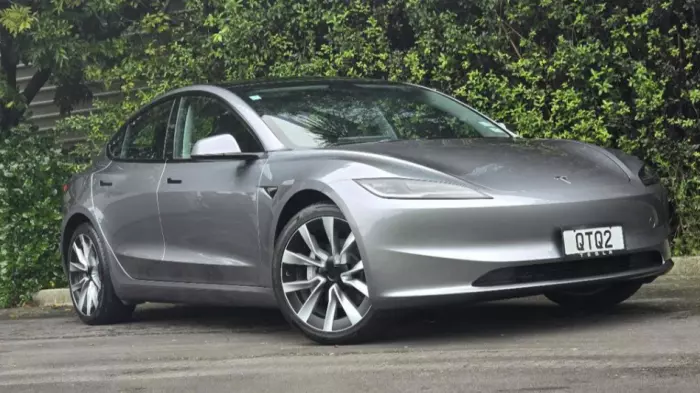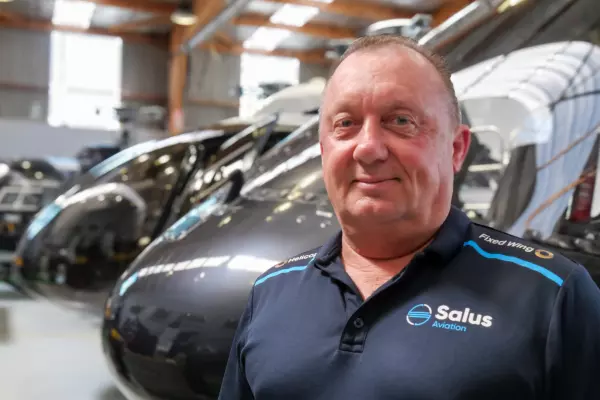“Nice bike,” says an admirer for about the fifth time as we sit outside a cafe in Wellington’s Lyall Bay discussing FTN Motion’s beautiful Streetdog electric motorbike.
It’s the same reaction as thousands traversing the main concourse at Wellington airport no doubt have as they pass a plinth bearing a Streetdog with a psychedelic paint job on what would usually be the petrol tank.
The airport is a backer, along with renewables-only electricity producer Meridian Energy and Wellington craft beer leaders Garage Project, of the latest New Zealand start-up to have a crack at launching an all-electric motorbike for a carbon-conscious world.
The local leader in this field is arguably UBCO in Mt Maunganui, now well into capital-raising in the US for its robust off- and on-road utility bikes that are finding uses in farming, conservation work and as round-town delivery vehicles.
The Streetdog is aimed at a different customer altogether and is far less the result of a corporate masterplan. In fact, its existence owes much to the first covid-19 lockdown.
Flatmates and inventive motorcycle hounds Luke Sinclair and Kendall Bristow found themselves stuck at home in April and May 2020, so used the six weeks to complete the prototype they’d been chipping away at for some time already.
Fast-forward to the day of our interview and the addition of some seed capital – found through Wellington’s Creative HQ – sees FTN Motion nestled into the back half of a light-industrial shed on Wellington’s south coast and building the first Streetdogs in conditions that are best described as “boys’ clubhouse”.
Bits of bike, tools, and other stuff are strewn everywhere in what the team calls “the cave”. Corporate comforts stretch to a couple of old armchairs, a makeshift coffee table and a battered collection of mugs.
When I arrive for my test ride, one of the guys is actually putting the bike back together.
 The Streetdog has 30 litres of storage space.
The Streetdog has 30 litres of storage space.
While the company is moving into new digs in the old Subaru maintenance warehouse in central Wellington, it’s clear that there is some distance to go before the 270-plus pre-orders at $9000 per machine are available to would-be buyers who are lining up in both NZ and overseas. (FTN Motion is eyeing the Netherlands as a potential early market and already has co-founder Saskia Thornton based in Amsterdam.)
For a start, a production model is some way off.
Howerver, at first glance, it is beautiful to behold. Not being a motorbike afficionado, I can’t tell you what it resembles other than that it looks like a classic racer from the first half of the 20th century. In effect, its design combines nostalgia with the future of post-petrol motoring.
The wheels are big – about bicycle-sized – and some elements of its design use mountain-bike parts. The seating position is low-slung. The Peruvian flag-styled red and white “tank” gives an appearance of sleek elegance, which is somewhat at odds with the deflating discovery that the Streetdog’s 3kW electric motor is rated for a top speed of 50km/h.
A larger battery and a more robust design may eventually allow a faster, more powerful model. But for now, the Streetdog is being developed to exploit the lesser requirements of the moped vehicle class.
With a battery charge time of six hours and 100km range, the reality is that this is a commuter town bike masquerading as a racer, although as soon as I got it onto the straight by the Wellington airport runway, it was a pleasant surprise that it wound out to 70km/h without much complaint.
But a 50cc petrol scooter would achieve much the same outcome and serve much the same purpose for round-town short trips. The difference would be that you look cooler on the Streetdog than on a 50cc scooter – and not only because just about anything is cooler than a 50cc scooter.
Notwithstanding the speed limitations, the ride on the Streetdog is exhilarating. The handling combines the lightness and responsiveness of a pushbike with the additional weight of the battery – centrally positioned under the seat – and heavier metal framing.
You weave and swoop and those mega-tyres soak up the absurd variety of potholes available to anyone heading around Moa Point to Breaker Bay.
The guys are still fiddling with the seating position, which is probably a good thing. My model had me lying forward with the foot pegs well to the rear. This felt racy, but not especially comfortable for a longer ride.
I could see the practicality of the 3D-printed 30-litre 'tank' as a place where a laptop, six-pack of beer or the results of a quick trip to the dairy would easily fit.
What I was less sure about was whether there is a long-term future for the Streetdog.
The pre-orders are impressive and a big part of the demographic it appeals to appears to be “sub-Boomer” – people who once rode motorbikes, would like to relive the dream and have a few quid, but will only ever use it to go to and from the office.
At $9000, it’s pricey.
And the Streetdog, at this stage, is still far from a finished product if the one I rode is a guide.
All kinds of small but vital things were either missing or due to be upgraded. For example, I couldn’t tell how full the battery was – a problem, since it ran out of juice on the test ride thanks to someone not recharging it after a ride the day before. At 67kg, minus the battery, it was a lot lighter to push than a petrol scooter, and waiting by the roadside on a beautiful day was another chance to accept gratuitous compliments from passers-by.
In a very Wellington moment, a couple of pushbikers stopped to check on me. Being Creative HQ employees, they knew the whole backstory already.
So, all power to their arms at Streetdog. It’s a great idea and very easy on the eye.
My suspicion, however, is that it may be the kind of thing that a middle-aged man with a mortgage could be tempted to buy because he’ll never afford a superyacht, and that its ability to fit that gaping hole may ultimately be limited.















